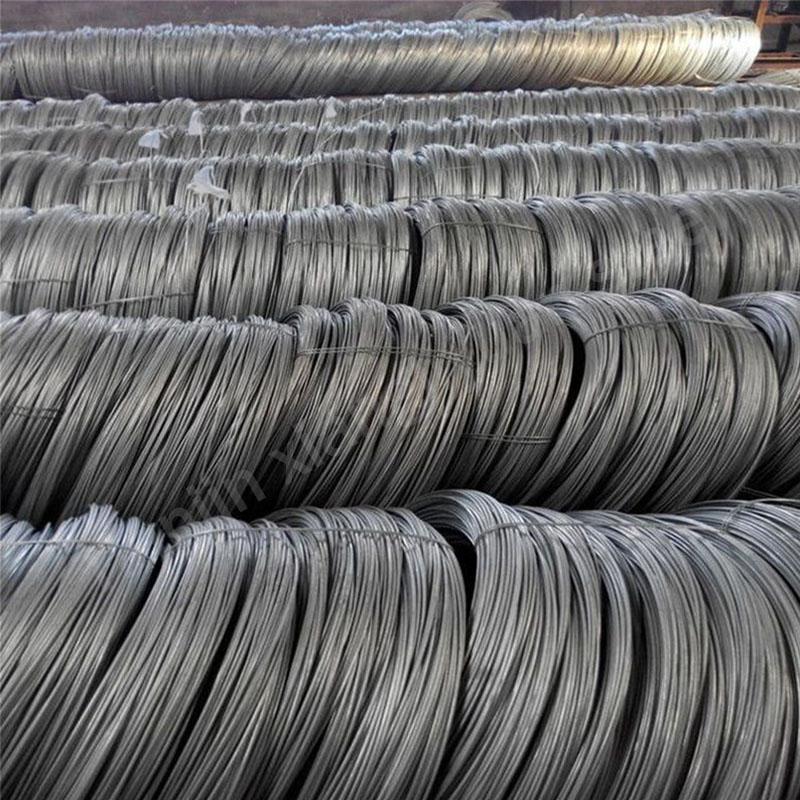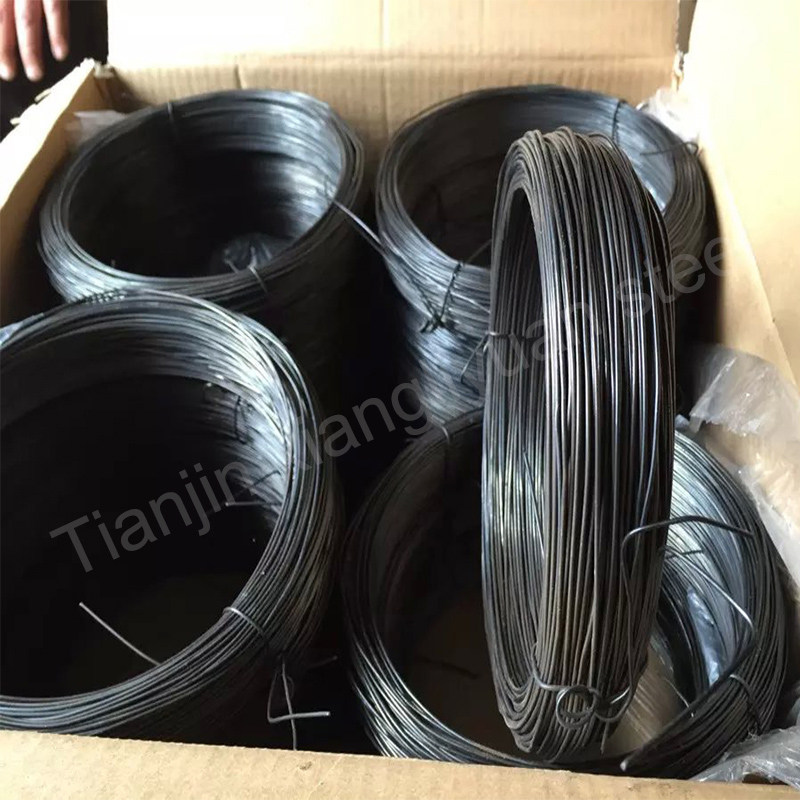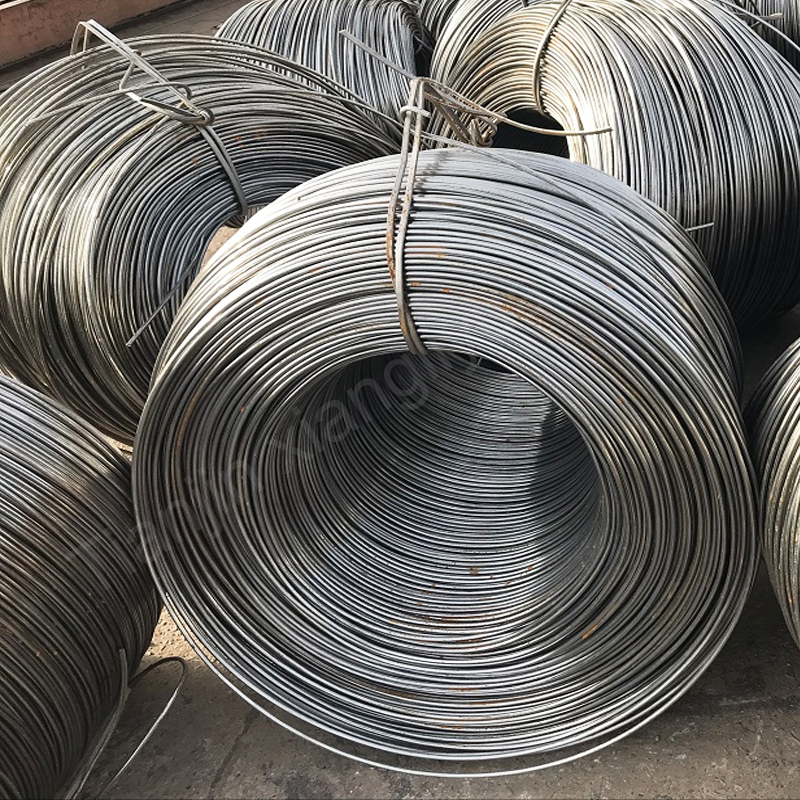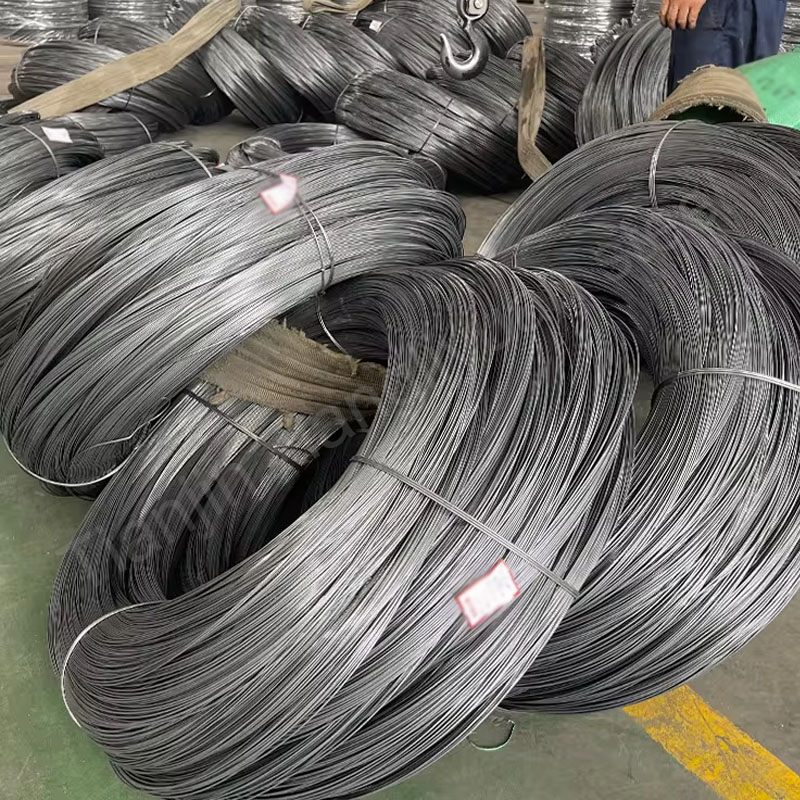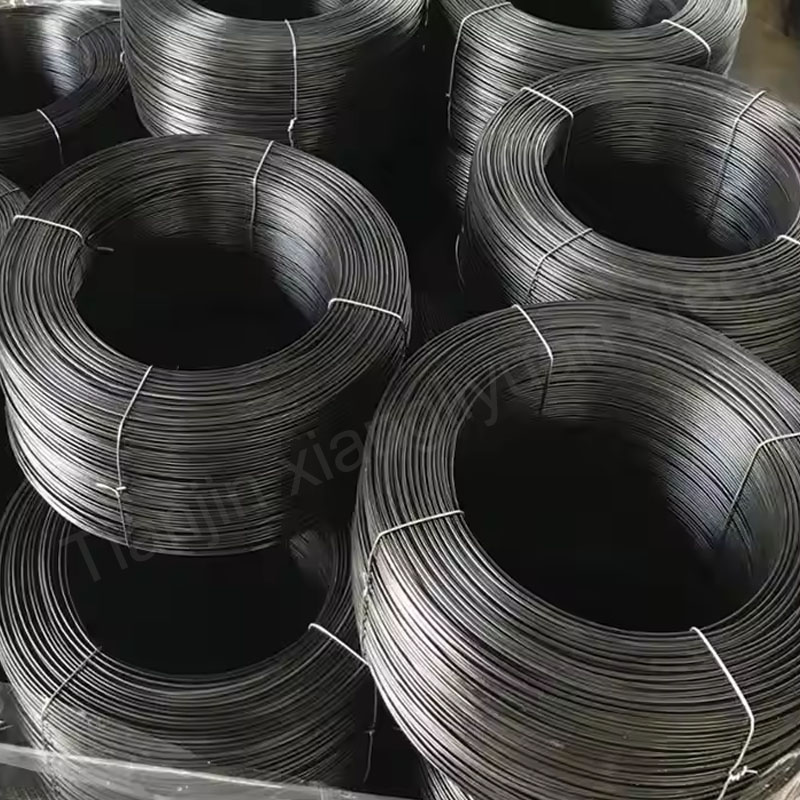Spring steel wire is a high-strength steel specially used for making springs. It is widely used in automobile, machinery, electrical equipment and other industries. Spring steel wire has good elasticity and toughness, and also needs to have excellent fatigue resistance and wear resistance to ensure that it can maintain elastic deformation under repeated loading.
The commonly used materials for spring steel wire are mainly carbon steel, alloy steel and stainless steel. Carbon steel spring steel wire usually has a high carbon content of about 0.6%-1.0% to improve the hardness and strength of the steel wire. Alloy steel spring steel wire adds chromium, vanadium, manganese and other elements to carbon steel to further enhance its performance. Stainless steel spring steel wire has excellent corrosion resistance and is suitable for springs used in humid or corrosive environments.
The processing technology of spring steel wire includes wire drawing, heat treatment and surface treatment. First, the steel wire is stretched to the required diameter through the wire drawing process. Then, after quenching and tempering heat treatment, the steel wire is given the required strength and elasticity. Surface treatment usually includes oxidation treatment, electroplating or spraying to improve the wear resistance and corrosion resistance of the steel wire.
Commonly used steel grades are as follows:
AISI 1060, 1070, 1080: These high carbon steels are very suitable for manufacturing high-strength carbon spring steel wire.
60Si2Mn, 55CrSi: These are typical alloy spring steels, which have higher strength and fatigue resistance because they contain elements such as silicon and chromium.
SUS304, SUS316: These stainless steel spring steel wires are widely used in chemical equipment and marine fields due to their corrosion resistance.
Different countries and regions have formulated their own spring steel wire standards to ensure its reliability and consistency in different application scenarios. These standards cover the chemical composition, mechanical properties, dimensional tolerances and surface treatment requirements of spring steel wire. The following are some of the main spring steel wire standards and their characteristics.
1. ISO International Standards
ISO (International Organization for Standardization) has developed a series of international standards for spring steel wire to ensure uniformity between different countries. Common ISO standards are:
ISO 6931-1: This standard specifies the requirements for stainless steel spring wire, covering the chemical composition, tensile strength and elongation of different grades of stainless steel. This standard is particularly suitable for stainless steel springs that require high corrosion resistance, such as springs used in marine environments.
ISO 8458: This standard focuses on carbon steel and alloy steel spring wires, and details technical requirements such as tensile properties and dimensional tolerances, which are suitable for the manufacture of high-strength springs.
2. EN European Standards
EN (European Standards) are widely used in Europe, and industrial manufacturing in European countries widely follows these standards to produce spring wires. The following are several important EN standards:
EN 10270-1: Specifies the requirements for cold-drawn carbon spring wire. The standard specifies the chemical composition, mechanical properties, dimensions and surface condition of the wire. This type of wire is mainly used to manufacture springs in the automotive and mechanical industries.
EN 10270-2: This standard targets alloy spring wires, especially silicon-manganese alloy wires, which are usually used to manufacture springs that require high fatigue life, such as automotive suspension springs.
EN 10270-3: Specifically for stainless steel spring wires, it specifies the specific requirements for different grades of stainless steel spring materials, which are suitable for applications in corrosion-resistant environments.
3. AISI American Standards
The American Iron and Steel Institute (AISI) has developed a series of standards for spring wire, especially for carbon steel and stainless steel wire. Common AISI standards are:
AISI 1070, 1080, 1090: These standards cover high carbon steel spring wire, suitable for high strength and hardness springs, such as heavy machinery springs and automotive suspension springs.
AISI 302, 304, 316: These stainless steel standards are suitable for corrosion-resistant springs, such as springs used in medical devices, chemical equipment, and marine engineering.
4. JIS Japanese Standards
The Japanese Industrial Standards (JIS) have an important influence in Asia and even around the world. The JIS standards contain many specifications related to spring wire. The following are two common JIS standards:
JIS G3521: For steel spring wire, it specifies the technical requirements for carbon steel and alloy steel spring wire, which is widely used in the manufacture of various types of springs.
JIS G4314: Specially used for the manufacture of stainless steel spring wire, covering the chemical composition, mechanical properties and processing requirements of stainless steel.
5. GB Chinese National Standard
In China, the production and testing of spring steel wire is carried out according to GB (national standard). Here are several key GB standards:
GB/T 4357: This is the national standard for cold-drawn carbon spring steel wire, which specifies the chemical composition, mechanical properties and dimensional requirements of the steel wire.
GB/T 1298: This standard is for alloy spring steel wire, with special emphasis on the fatigue resistance and high temperature resistance of the steel wire.
GB/T 20878: This is the national standard for stainless steel spring steel wire, which specifies the chemical composition, tensile properties and corrosion resistance requirements of stainless steel spring steel wire.
Spring steel wire is widely used in the manufacture of various types of springs, including automotive suspension springs, engine valve springs, compression springs and tension springs in industrial equipment, and miniature springs in electrical equipment. Spring steel wires of different materials and standards can be used in different occasions with different requirements for strength, corrosion resistance, wear resistance, etc. according to their characteristics.
In short, spring steel wire is an indispensable material in modern industry, and its material, processing technology and quality standards have a direct impact on the performance of the spring.

